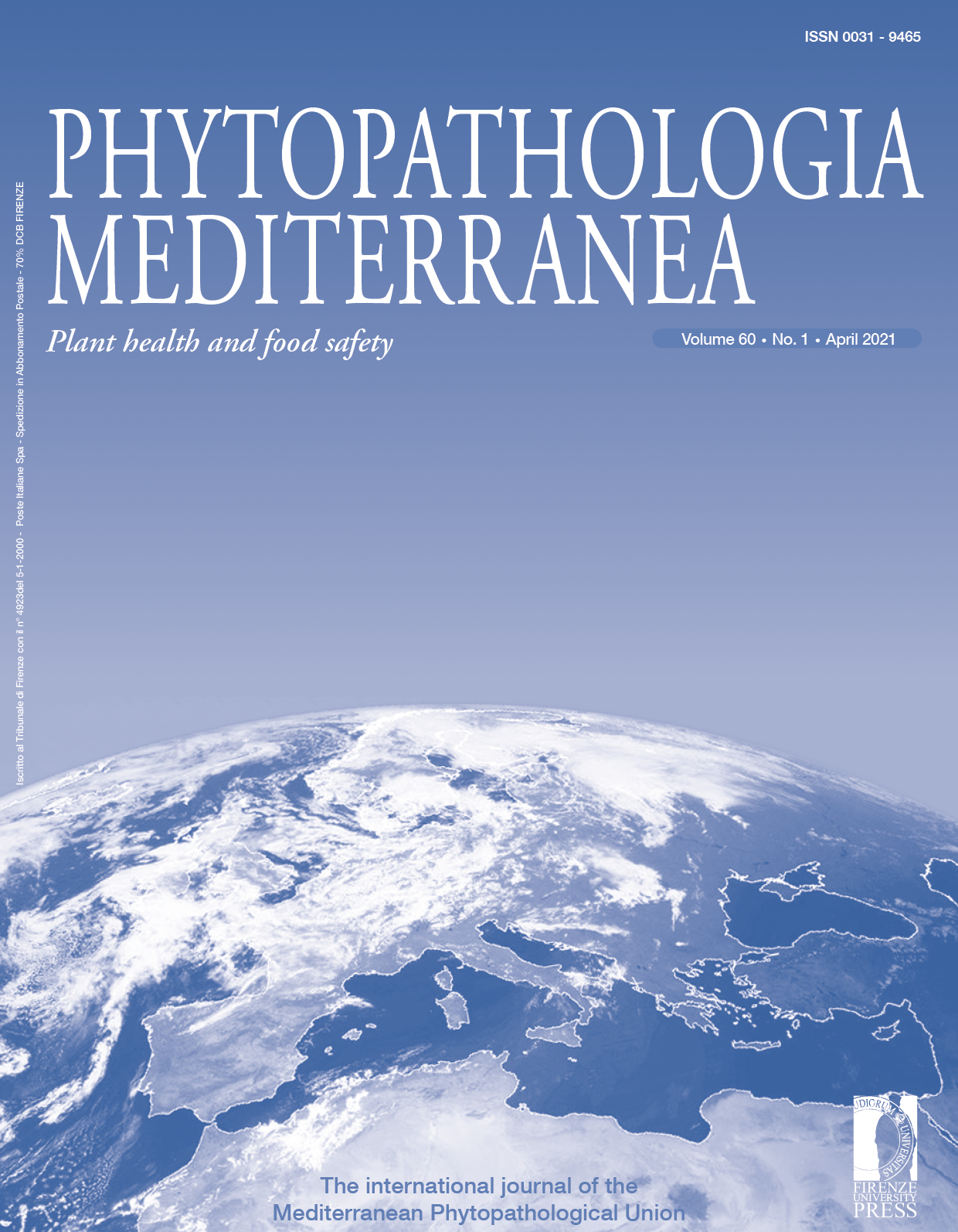Published 2021-05-14
Keywords
- Hydroponics,
- Phytophthora control,
- Capsicum annuum,
- salts,
- microorganisms
How to Cite
Abstract
Twelve trials, in closed soilless culture under controlled conditions, were carried out to evaluate the efficacy of resistance inducers (based on K-phosphite and K-silicate used alone or in combination), and of experimental biocontrol agents (Trichoderma sp. TW2, a mixture of Pseudomonas FC 7B, FC 8B, and FC 9B, Fusarium solani FUS25, Pseudomonas sp. PB26), and a commercial formulation of Trichoderma gamsii + T. asperellum, against diseases caused by Phytophthora capsici of sweet pepper. The products were applied using three different protocols, and effects on incidence of Phytophthora crown, stem and root rots (% dead plants), disease development (area under the disease progress curve; AUDPC), and plant fresh weights were evaluated. Potassium phosphite, applied directly at standard P2O5:K2O, 1.30 + 1.05 g L-1) and at half standard rates, onto growing media, or via nutrient solution, and before infestation of peat plant growing medium with P. capsici, provided the best disease management in a dose-dependent manner, with an 80% reduction of Phytophthora crown, stem and root rots for the standard dosage and for both types of application. These treatments also reduced proportions of dead plants by 47% from the standard rate and by 62% at the half standard rate, when applied via the nutrient solution or directly to the substrate. K-silicate alone partially reduced the percentage of dead plants, with efficacy of 20–23%. No improvement in disease control was observed when K-silicate was applied in combination with phosphite, while K-silicate alone or combined with K-phosphite reduced disease development, compared to untreated controls. Biocontrol agents (BCAs), applied preventively, reduced Phytophthora crown, stem and root rots, with similar or better results than those from the commercial mixture of Trichoderma asperellum + T. gamsii. Among the tested BCAs, Fusarium solani FUS25 provided the most consistent disease reduction (60–65%) and gave increased plant fresh weights. All the tested BCAs reduced disease development, with a similar trend for different disease pressures. The least AUDPC values, compared to the non-treated controls, were from Fusarium solani FUS25, followed by the tested Pseudomonas strains and Trichoderma sp. TW2. These results indicate the potential for potassium phosphite and biocontrol agents in management of Phytophthora crown, stem and root rots of pepper grown in soilless systems.






